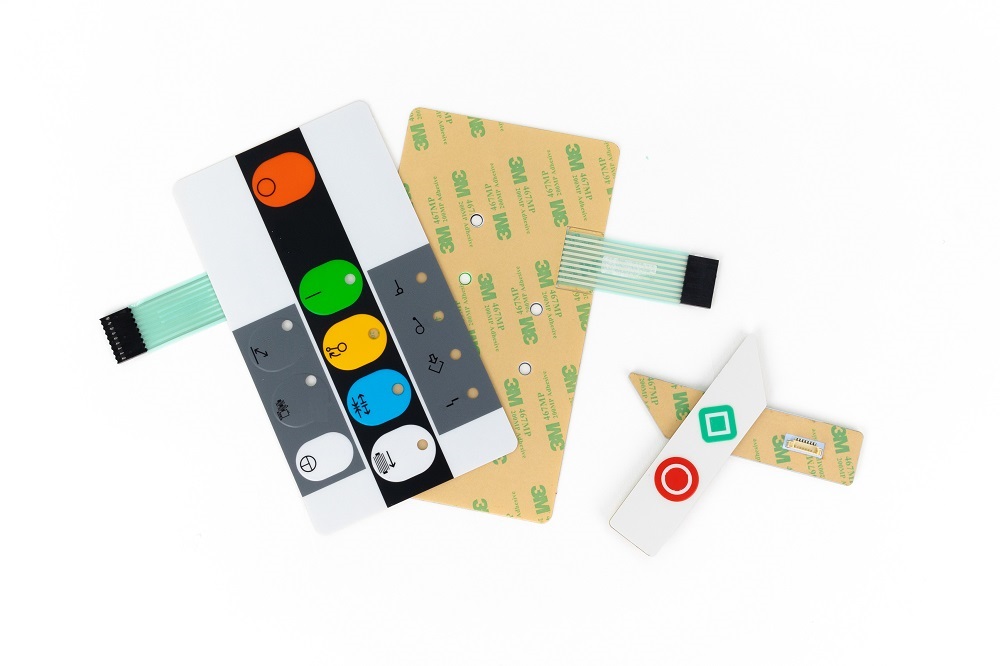How Membrane Switches Are Shaping the Future of Electronic Interfaces
Comprehending Membrane Layer Switches: The Trick to Trusted and resilient Controls

What Are Membrane Layer Buttons?
Membrane layer switches are a sophisticated service in the world of interface technology, integrating performance and design flawlessly. These devices function as a user interface between individuals and electronic systems, incorporating numerous elements into a portable style. Normally constructed from adaptable, thin layers of products, membrane layer switches are created to respond to touch, enabling individuals to communicate with equipment and digital gadgets properly.
The main components of a membrane layer button include a printed circuit layer, visuals overlay, and a spacer layer that stops unexpected activation. The visuals overlay can be personalized to mirror brand name identity or user preferences, improving visual appeals while guaranteeing usability. Membrane layer switches are typically utilized in numerous applications, including clinical gadgets, consumer electronics, and industrial devices, owing to their durability and resistance to environmental elements such as moisture and dust.
Among the crucial advantages of membrane switches is their capability to hold up against damage, making them ideal for high-traffic settings. Furthermore, they are light-weight and need very little space, enabling innovative styles in product growth. Overall, membrane switches stand for a useful and efficient selection for contemporary digital user interfaces, weding innovation with user-centric design concepts.
How Membrane Switches Work
The procedure of membrane layer switches joints on an easy yet effective mechanism that converts user input into electronic signals. When an individual presses the switch, the leading layer deforms, permitting a conductive element in the circuit layer to make call with a corresponding conductive pad on the bottom of the visuals overlay.
The design of membrane layer buttons can vary, however they frequently integrate domes or responsive aspects to supply responses to the individual, improving the general experience - membrane switch. The materials used in membrane layer buttons, such as polyester or polycarbonate, add to their durability and resistance to ecological elements, consisting of dampness and dust. Furthermore, the published circuits are generally enveloped, which protects them from wear and tear with time.
Benefits of Membrane Switches

Additionally, membrane buttons are known for their resilience. Built from robust products, they are resistant to dirt, wetness, and physical wear, which significantly extends their life expectancy contrasted to typical mechanical buttons. This longevity makes them particularly ideal for high-traffic settings and applications needing long life.
An additional considerable advantage is the convenience of cleaning and upkeep. The smooth surface of membrane switches lessens dust accumulation and is commonly impervious to spills, making them optimal for settings that need frequent sanitization.
Furthermore, membrane switches offer a streamlined profile, causing a thinner layout that can be incorporated right into various gadgets without adding bulk. This function not only enhances the aesthetic appeal yet likewise contributes to a more ergonomic product style.
Applications of Membrane Layer Buttons
Functional and straightforward, membrane layer switches find applications throughout a large range my website of markets, including clinical tools, customer electronic devices, and industrial tools. In the medical field, these buttons are important to gadgets such as analysis tools, patient surveillance systems, and mixture pumps, where reliability and convenience of cleansing are essential. Their capacity to maintain and hold up against extreme atmospheres functionality makes them optimal for such applications.

In consumer electronic devices, membrane buttons are utilized in products like microwaves, washing equipments, and remote controls - membrane switch. Their streamlined design enables instinctive user interfaces, boosting the overall customer experience while giving sturdiness and resistance to tear and put on
Commercial tools additionally profits from membrane buttons, especially in control panels for machinery and automation i loved this systems. These switches supply security versus dust and wetness, making certain constant performance in challenging settings. Their personalized attributes enable suppliers to customize them to particular operational demands, boosting performance and performance.
Choosing the Right Membrane Layer Switch Over
When selecting a membrane layer switch, it is important to consider various variables that affect efficiency and viability for particular applications. The primary considerations include environmental problems, responsive responses, toughness, and style specifications.
First, analyze the operating setting; switches subjected to moisture, chemicals, or severe temperature levels need specific materials to make certain durability and performance. Next off, assess the requirement for responsive feedback. Depending on user communication, some applications may take advantage of a tactile action to confirm activation, while others might prefer a non-tactile style for visual reasons.
Sturdiness is an additional crucial element; membrane layer buttons ought to be designed to stand up to regular usage, influences, and abrasion. Make sure the chosen switch can endure the expected lifecycle, specifically in high-usage situations.

Final Thought
In conclusion, membrane switches over serve as necessary components in the style of long lasting and trustworthy control systems throughout various industries. The versatility of membrane layer switches over allows for tailored options that fulfill certain operational requirements, strengthening their relevance in modern technology.
Membrane layer changes represent a crucial aspect of modern-day interface style, blending functionality with durability in numerous applications.Membrane layer switches are a sophisticated option in the realm of user interface innovation, integrating performance and style flawlessly. Usually constructed from find this flexible, slim layers of materials, membrane layer switches are designed to respond to touch, allowing users to communicate with machinery and digital gadgets efficiently.
The design of membrane switches can differ, yet they often incorporate domes or responsive aspects to offer responses to the customer, improving the overall experience.In final thought, membrane changes offer as crucial elements in the layout of resilient and reputable control systems across various industries.